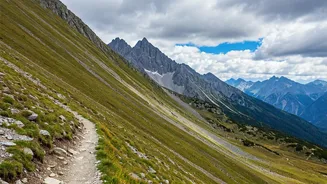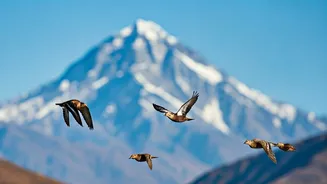Dangerous Trekking Destinations
The world offers a multitude of trekking destinations, but some stand out due to their inherent dangers. Trekkers should consider challenges like unpredictable
weather, treacherous terrain, and high altitudes. The Drakensberg Traverse in South Africa and the Annapurna Circuit in Nepal, for instance, present unique hazards. Every trekker must thoroughly research their chosen route, taking into account these specific challenges and the crucial need to pack the right equipment, alongside having the proper physical conditioning, to ensure a safe and unforgettable journey. Safety is always the top priority.
The Drakensberg Traverse
The Drakensberg Traverse in South Africa is known for its rugged mountains and changeable weather conditions. This trek exposes hikers to unpredictable rainfall, which can transform trails into slippery, dangerous paths. The high altitude adds to the challenge, demanding excellent physical fitness and careful acclimatization. Trekkers need to be prepared for sudden temperature changes, from scorching sun to freezing nights. This trek provides a remarkable experience but mandates thorough planning, including carrying the right equipment, adequate water, and food. The experience rewards those who prepare diligently.
Annapurna Circuit's Perils
The Annapurna Circuit in Nepal offers stunning views, but it comes with significant risks. The route's high altitude puts trekkers at risk of altitude sickness, requiring careful acclimatization. Landslides and avalanches are also constant threats, especially during the monsoon and post-monsoon seasons. Furthermore, the rapid weather changes, from clear skies to blizzard conditions, can catch even the most experienced hikers off guard. Hikers must stay updated on weather forecasts and possess the knowledge to identify and navigate potentially dangerous terrain. The trek necessitates respect for the mountain's power and meticulous planning for a rewarding adventure.
Huayhuash Circuit
The Huayhuash Circuit in Peru is renowned for its remote location and challenging conditions. At high altitudes, trekkers face the threat of altitude sickness. The steep trails and unpredictable weather can create hazardous conditions, including snowstorms and landslides. The remoteness of the area can make rescue operations difficult. Trekkers must arrange for comprehensive insurance and carry satellite communication devices. Navigating the Huayhuash Circuit demands technical skills and careful attention to safety protocols. It is important to remember that preparation and experience are the keys to a successful trek in this location.
Kalapathar Trek Details
The Kalapathar Trek in Nepal, leading to a high vantage point near Mount Everest, provides a unique experience. This trek demands careful preparation for the high altitude, which is known to be a significant challenge for even experienced hikers. Trekkers need to acclimatize properly to avoid altitude sickness. The fluctuating weather can be another obstacle, with sudden changes in temperature and visibility. The trail itself is demanding, with steep climbs and uneven terrain. Adequate training and an understanding of high-altitude trekking are essential for anyone considering this journey, guaranteeing both a breathtaking experience and safety.
Everest Base Camp
The Everest Base Camp trek in Nepal is a popular adventure but poses notable challenges. This trek presents the obvious risks associated with high altitudes, including the potential for severe altitude sickness. Trekkers must acclimatize carefully and understand the signs of altitude sickness. The terrain includes challenging trails and variable weather conditions, with sudden storms. To mitigate risks, trekkers should book with reputable guiding companies, carry essential gear, and be prepared for demanding physical activity. While the views are spectacular, safety must always come first.
Mount Huashan
Mount Huashan in China, known for its precarious plank walkways, offers an intense experience. The paths are narrow and sometimes require the use of safety harnesses. The extreme exposure and the steep drops heighten the risks. While safety measures are in place, the trek demands a strong head for heights and a steady foot. Careful attention to the weather conditions is essential to ensure a safer experience. This trek, with its unique features, requires careful planning and a good level of physical fitness to ensure a successful and safe adventure.


















